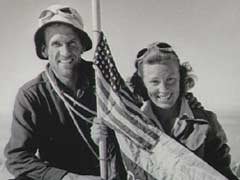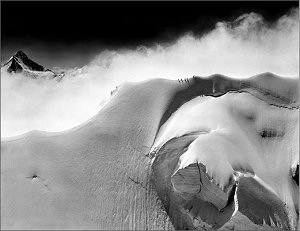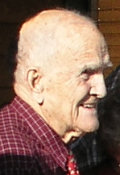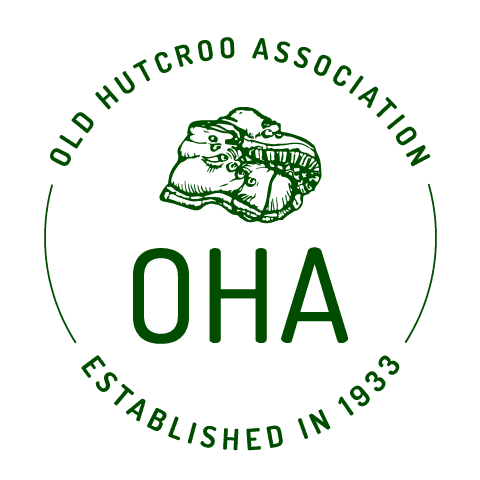 Henry Bradford Washburn Jr. (June 7, 1910 – January 10, 2007) was an explorer, mountaineer, photographer, and cartographer extraordinaire. He was the director of the Boston Museum of Science from 1939-1980, and was its Honorary Director (a lifetime appointment) from 1985 until his death.
Henry Bradford Washburn Jr. (June 7, 1910 – January 10, 2007) was an explorer, mountaineer, photographer, and cartographer extraordinaire. He was the director of the Boston Museum of Science from 1939-1980, and was its Honorary Director (a lifetime appointment) from 1985 until his death.
He was an Honorary Member of the OHA and owned the Jackson, New Hampshire cabin above the OH Cabin now on the road called Washburn Way. He gave the OHA eighteen acres of his property in the late 1930’s on which the present OH Cabin was built. Prints of some of his more famous mountain photography are displayed at the Thayer Hall at the AMC’s Highland Center. His association with the OHA and the AMC was a long one going back to his hosting a raucous OH reunion in 1959 on the top floor of the Museum of Science while it was being renovated. He was on the Board of Advisors of the AMC and several times told his famous Crapper Barrel story which will be printed in the summer 2007 Resuscitator.
Born in Cambridge, Massachusetts, he received an undergraduate degree from Harvard University. He returned to Harvard to earn a master’s degree in geology and geography in 1960.
 Washburn was noted for his exploits in four areas. First, he was one of the leading American mountaineers in the 1920s through the 1950s, putting up first ascents and new routes on many major Alaskan peaks (often with his wife, Barbara Washburn, one of the pioneers among female mountaineers). Second, he pioneered the use of aerial photography in the analysis of mountains and in planning mountaineering expeditions. His thousands of striking black-and-white photos, mostly of Alaskan peaks and glaciers, are known for their wealth of informative detail and their artistry. They are the reference standard for route photos of Alaskan climbs.
Washburn was noted for his exploits in four areas. First, he was one of the leading American mountaineers in the 1920s through the 1950s, putting up first ascents and new routes on many major Alaskan peaks (often with his wife, Barbara Washburn, one of the pioneers among female mountaineers). Second, he pioneered the use of aerial photography in the analysis of mountains and in planning mountaineering expeditions. His thousands of striking black-and-white photos, mostly of Alaskan peaks and glaciers, are known for their wealth of informative detail and their artistry. They are the reference standard for route photos of Alaskan climbs.

Washburn gathered many awards over the course of his career, including nine honorary doctorates, the Centennial Award of the National Geographic Society (shared with his wife Barbara, the first woman to summit Mount McKinley), and the King Albert Medal of Merit.
He died of heart failure on January 10, 2007, at the age of 96, in a retirement home in Lexington, Massachusetts. In addition to his wife, he left a son, Edward H., and two daughters, Dorothy Dundas and Elizabeth Cabot.
